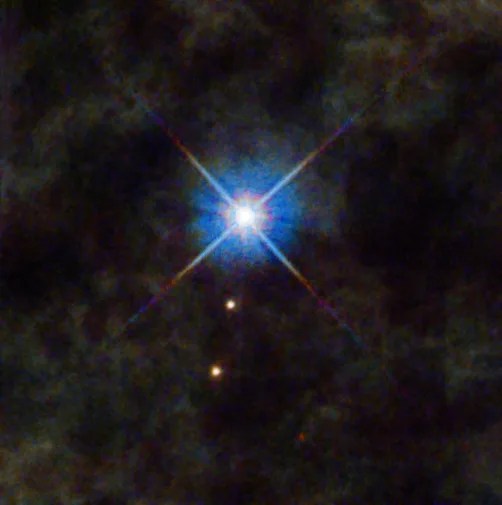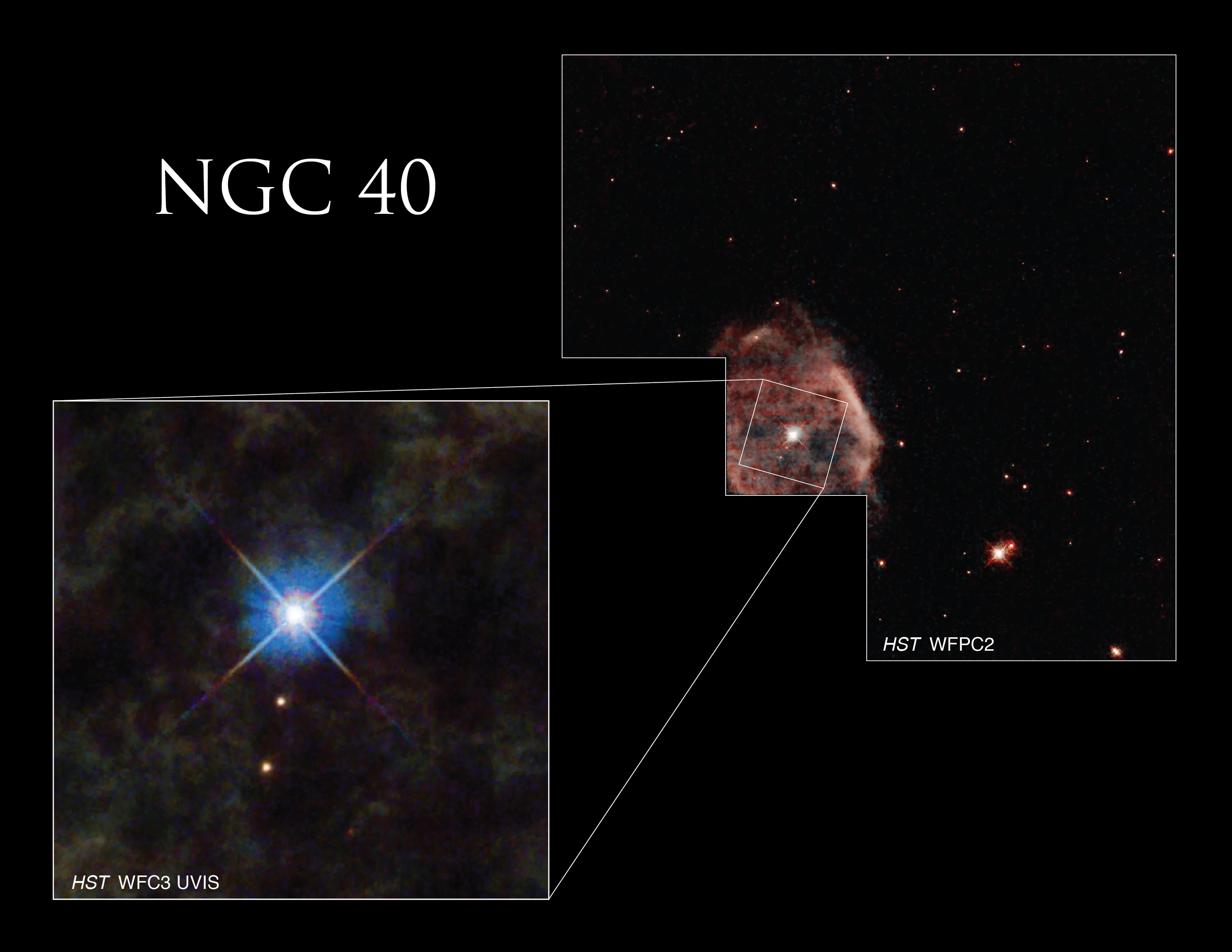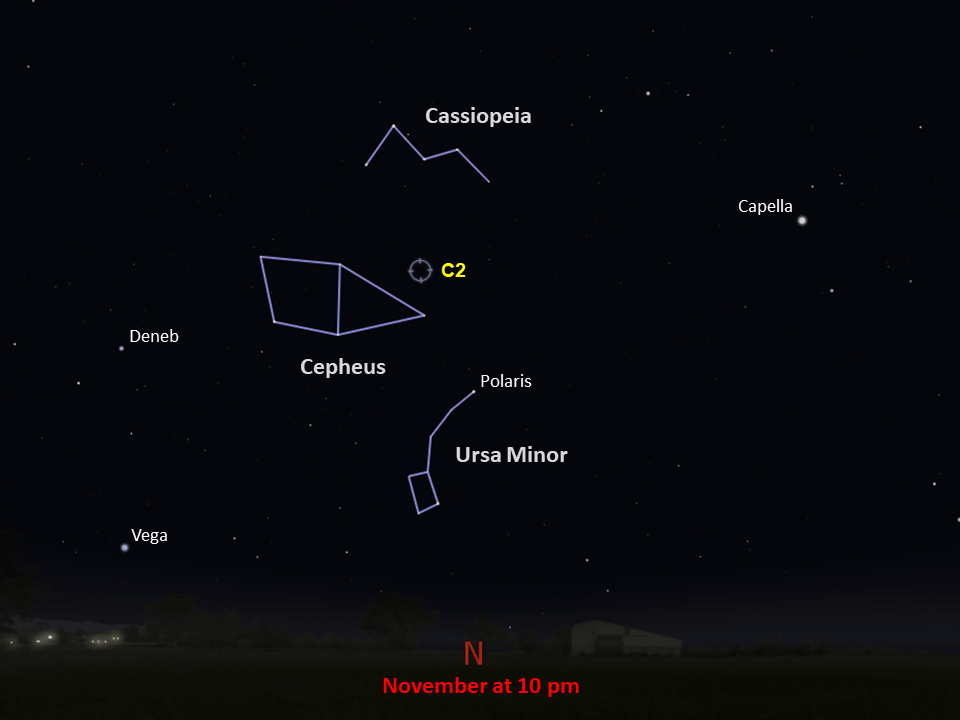Caldwell 2
This shell of gas is expanding outward, away from the dying star within.
Distance
3,500 light-years
Apparent Magnitude
12.3
constellation
Cepheus
object type
Planetary Nebula

This hazy Hubble image captures a portion of the planetary nebula Caldwell 2, or NGC 40. A shell of gas is expanding outward from the nebula’s central star, which has reached the final stage of its life. Energy from the dying star is causing the surrounding shell of gas to glow. As the planetary nebula disperses over the course of tens of thousands of years, it will leave behind a stellar corpse called a white dwarf, the small, dense core of the star.

Caldwell 2 was discovered by the astronomer William Herschel in 1788 and is located roughly 3,500 light-years away in the constellation Cepheus. It is often difficult to spot because the glowing gas shell appears very small in the sky and has an apparent magnitude of only 12.3, making it the faintest object in the catalog. Caldwell 2’s bright central star can wash out the cloud of gas, so a telescope is needed to resolve the nebula. Observers in the Northern Hemisphere will have the best view of Caldwell 2 in early winter. The nebula can also be seen from equatorial latitudes in the Southern Hemisphere and is easiest to spot in early summer.
This image of Caldwell 2 was taken in 1995 as part of a survey of nearby planetary nebulae. Astronomers used Hubble’s Wide Field and Planetary Camera 2 to search for central stars that have close companion stars. These companion stars are helpful to astronomers because they can be used to determine the distance to planetary nebulae like Caldwell 2.


Glossary
Apparent Magnitude - The brightness of an astronomical object as seen from Earth, influenced by the object's distance from Earth, its absolute magnitude, and even gas and dust that lie between the object and Earth.
Nebula - An interstellar cloud of dust and gas; either a location where new stars are being forged or a cloud of material ejected into space by a dying star.
Planetary Nebula - An expanding shell of gas around an aging or dying Sun-like star, cast off by the star.
White Dwarf - The core of a dead Sun-like star whose outer layers have been expelled into space.
Explore Hubble's Caldwell Catalog
The following pages contain some of Hubble’s best images of the Caldwell objects.

Caldwell 1
Also known as NGC 188, this group of stars formed from a large cloud of gas making the stars roughly…

Caldwell 3
This barred spiral galaxy was first spotted by British astronomer William Herschel in April 1793 in the constellation Draco.




